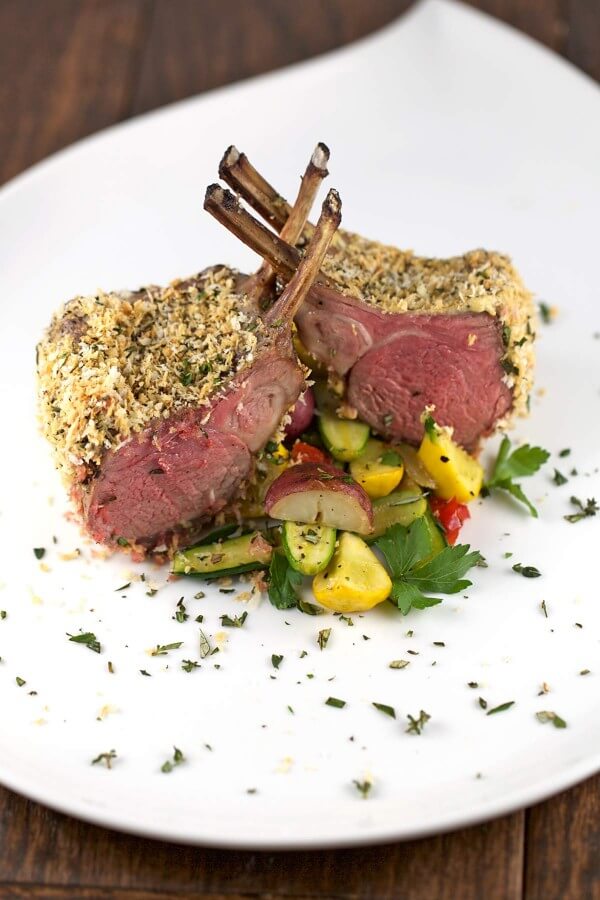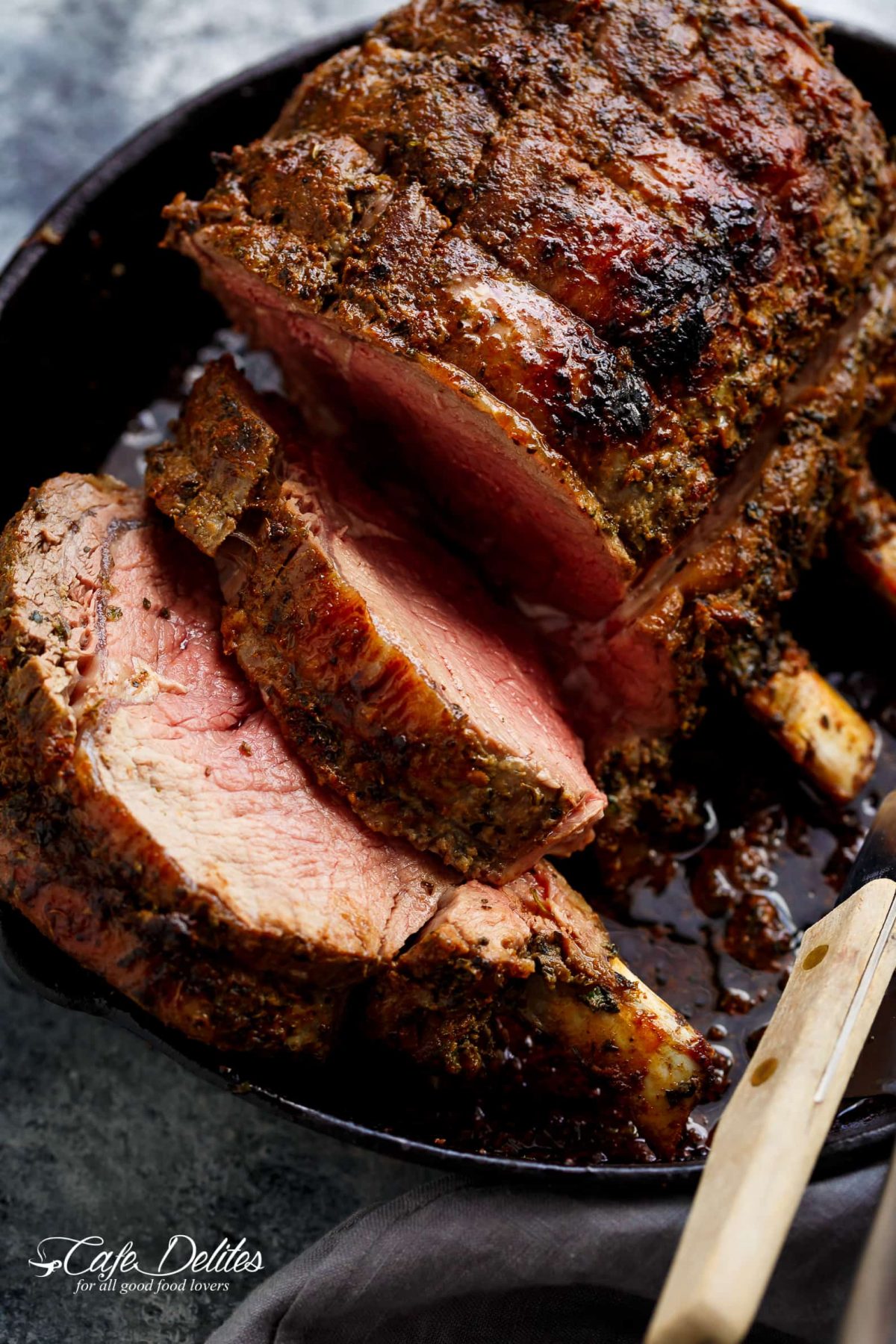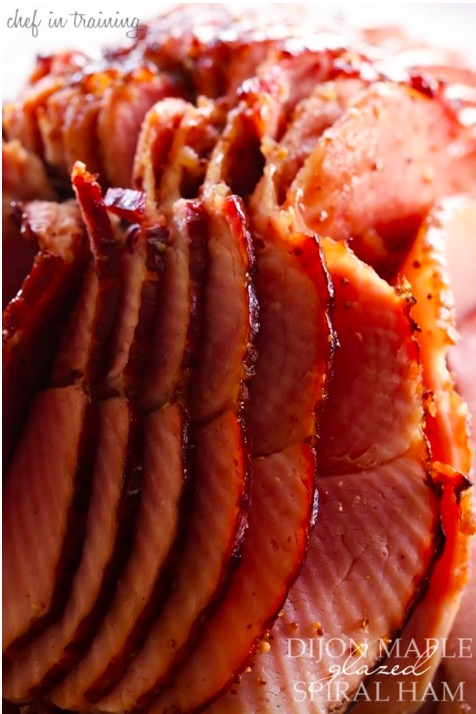Whether you’re an observant Christian or not, there’s plenty to celebrate about Easter: Spring is in the air, the days are getting longer, and the plants are beginning to turn green again. Newness is everywhere, and an Easter dinner is a great way to celebrate.
This year, Passover falls at the same time as Easter, and several of these recipes are (or can be) Kosher. Ham is the traditional American Easter entree, but lamb, beef, and fish are also delectable options, of course. So go on — set the table, decorate the house, invite the guests, and have a very happy springtime holiday!
1. Panko herb-crusted rack of lamb with vegetables
Imagine a beautifully-set Easter table in a room flooded with spring sunshine. Your family and friends are gathered at the table, eagerly watching you approach with a stunningly beautiful panko herb-crusted rack of lamb with vegetables.
Lamb — sheep less than one year old — has long been a popular springtime dish. Before modern refrigeration, lamb was more convenient to butcher in spring than beef and pork. Some Passover meals feature it in remembrance of the lambs slaughtered to protect against the plague of the firstborns while the Hebrews were exiled in Egypt. For Christians, Jesus was “the Lamb of God,” the sacrifice that saved humankind. In general, lamb symbolizes youth and new life — the essence of spring.
Australia and New Zealand account for 90 percent of the world’s lamb production. You’ll find it in U.S. and European supermarkets starting in the spring, with higher prices in the fall. The U.S. accounts for just 1 percent of total worldwide consumption of lamb — much less than Europe or the Middle East, where lamb is served regularly.
Best served rare or medium-rare, it’s a very nutritious, high-iron protein that contains conjugated linoleic acid, which has been shown to aid in body fat loss. Likewise, lamb meat is saturated with vitamin B12, selenium, zinc, niacin and phosphorous.
An impressive main course
A rack of lamb might look difficult to prepare, but it’s actually quite simple. In this case, the rack is split into two rib sections, seared, and then dredged in toasted panko breadcrumbs. Simple and impressive.

2. Garlic-herb prime rib roast
Not much can beat a mouthwatering prime rib. True, it’s not the traditional ham or lamb — but when served perfectly medium-rare with a juicy interior encased in a crisp crust, prime rib may be exactly what your Easter table needs.
Prime (standing) rib roasts have been around since the Industrial Revolution, when modern butchering techniques allowed for more precision in processing. They come from the sixth through 12th ribs (seven ribs in total). Cutting the ribs apart produces a ribeye steak. These particular ribs feature lots of marbling (dispersion of fat), which creates a super-flavorful bite.
A prime rib can feed a crowd, easily yielding eight or more servings. For a more economical cut, choose a choice rib roast; it’s virtually the same, except for the ever-so-slightly lower quality of the “choice” label (as opposed to “prime”). It’s an excellent choice if cost is an issue. When ordering from the butcher, be sure to specify to leave the fat cap on. Yes, it sounds gross, but the fat cap is a built-in flavor-container that traps moisture and flavor during cooking.
A favorite part of prime rib dinners is the au jus, a broth-based gravy made from the drippings and served atop the roast. Horseradish sauce is a popular condiment; it’s made from the spicy tuber vegetable, usually shredded and prepared with cream or mayonnaise, salt and other seasonings.
This garlic herb prime rib roast recipe features delicious, nutritious garlic, known to aid inflammation and heart health. The roast cooks in only an hour in a cast-iron pan, with the rib bones on the bottom serving as a built-in roasting rack.
Another recipe to try: Slow-roasted beef prime rib with horseradish sauce.

3. Dijon maple-glazed spiral ham
Americans consume roughly 51 pounds of pork products each per year, and Easter dinner is one of the prime times.
Ham — made from a section of the pig’s hind leg — has been a favorite of Europeans and North Americans for centuries, featured in writings as far back as 165 B.C. Back in the day, when pigs were butchered in the cooler days of fall, salting and curing prevented spoilage throughout the winter and spring. By the time Easter rolled around, the hams were perfectly cured and ready for dinner. As a pork product, it’s enjoyed only by those who don’t keep a Kosher diet — meaning it’s perfect for Easter celebrations, but a no-go for Passover.
Nowadays, ham is either dry- or wet-cured, which usually takes anywhere from nine months to two years. There are many different kinds, each with a different method of curing — such as Bayonne (using an ancient French technique) and Smithfield (country hams finish-cured in Smithfield, Virginia).
Because ham comes already flavored and salted, cooking a ham is actually pretty easy. Typically, you only need to dry-roast it until heated through, then top it with a sweet and spicy glaze like the one featured in this Dijon maple-glazed spiral ham. Spicy, pungent mustard combined with sweet maple syrup provide a beautiful counterpoint to the inherent saltiness of many pork products. The glaze is poured over the heated ham, and the whole thing instantly becomes simply irresistible… meaning the family will never again groan about “another” Easter ham.










